They’re young, smart and cool, and they represent a new breed of saltwater stylists. They’re the builders – and the owners – of a new wave of floating fortresses. Dickey Boats fits the bill on both fronts.
The blue-water highway used to be ruled by dudes with beards on the flybridges of boats powered by big noisy twins. The interiors of such vessels were decorated by cloth cut from a large curtain roll sourced from Spotlight.
Head to any offshore fishing ground nowadays and you’re more likely to be mixing it with sleek, highly-specced, sub-35ft (10.7m) battlewagons built by the likes of Dickey, Moda and AMM. Chances are, behind the tinted windows, sitting in front of the 16-inch navigation screens is a self-made young gun in his thirties. Jarrod Rourke fits the bill. He’s quietly confident and unassumingly successful; a cool cat, street-smart and passionate about his boats. He’s the bloke I wanted to be in my thirties, except I spent all my money at Whitworths trying to keep my busted-arse boats afloat.
Rourke owns a commercial wiring company in the Shire, south of Sydney. He describes himself as a glorified sparky, but we ain’t buying that shit. On the weekends, he can be found in the backyard of his Port Hacking home with his wife and two kids, looking out at his Dickey Semifly 32 bobbing handsomely at its own wharf. Yep, life’s good for J-Dog.
THE COOL CREW
Jarrod appreciates the fine things in life, but when he hankers for errant ways, he picks up The Captain. He even offered to take us for a ride, which we gleefully accepted. We decided that game fishing would be the only way to review his Dickey Semifly 32 – and that we’d need a crew of the coolest Captain deckhands we could find to accompany Jarrod on the mission.
Jack Murphy, whose beard uses more oil than a V8 LandCruiser, was an obvious choice. Joel Ryan’s icy blue eyes barely flicker in the face of belligerent blue-water behemoths, so he made the cut. Those perfect peepers are also made to melt a camera’s lens.
This cool crew would troll the shelf in their snapback hats and Polaroids while sipping European beers and listening to cruisy electronic tunes – all the while admiring the subtler points of a Dickey Semifly 32 dubbed Obsession. With the hot gossip suggesting big blues for the intrepid wide of Port Stephens, we bolted from Obsession’s Port Hacking berth, steaming 175km into a belligerent 25-knot nor-easter. The Semifly 32 travelled at about 16 knots for relative comfort’s sake, then up to 20 knots when the weather backed off, late.
One notable thing about the Dickey is its fuel usage – and one of the main reasons Jarrod stumped up his hard-earned sparky dollars in the first place. These boats are famously lean machines: a combination of fine entry, long waterline length relative to volume and efficient drive choices that deliver miserly fuel consumption. Jarrod spent hours researching game boats, even shortlisting a Viking and some big Yank consoles. In the end, the fuel efficiency and lightweight construction of the Dickey won out, as well as its ability to present as a classic cruiser for friends and family, then convert to an overnighting floating fortress for trips such as this one.
For a bloke as busy as Jarrod, time on the water comes at a premium, so he also wanted something quick to the fishing grounds. He can belt down to Jervis Bay at 30-plus knots in two hours and spend the whole day fishing. Whether the boat is doing 16 knots or 28 knots, the Volvo Penta D6-370 burns about the same amount of fuel. On the 175km run to Port, the vessel used 276L or about 1.6L per km. Yes, you read that right.
DUMMIES GUIDE TO CATCHING BLUES- With help from Capt. Jeff Strang
Riding shotgun for the Dickey test was Jeff Strang, ex-editor of notable boating and fishing magazines in Australia and New Zealand. He’s involved with the Dickey brand as a consultant and joined our trans-Tasman affair aboard the camera boat. He’s also an ex-professional gamefisherman with more than 15 years’ experience and knows his blue marlin stuff. Clearly, he does, because everything that he said would happen on the day did. Jeff says, “The best advice for blue marlin fishing is don’t overthink it and use seriously sharp hooks. Other than that, it’s about being in the right place at the right time.”
But where is this right place? And when is this right time? Apparently, it’s an instinctive magic formula borne of experience. Knowing a hotspot when you see one and having the confidence to wait out a lull in the bite is the secret to many a captain’s fish conjuring success.
We got most of that right on our Dickey test day, but unfortunately, we broke Jeff’s next piece of golden advice. He says, “Whatever you do, don’t take a knife to this blue marlin gunfight. Use 80W cannons if the fish are likely to be 400lb or bigger, unless you’ve got a properly hot crew to sort the mess out quickly.” Dang, we had Tiagra 50Ws, 30Ws and a couple of Stellas, so naturally (Jack) Murphy’s Law prevailed.
The 30lb gear went off first followed later by the Stella, along with $500 worth of tackle never to be seen again. The first fish went deep and couldn’t be hauled up; the second crashed a Stella late in the day and spooled us before we’d even cleared the gear. Jeff typically trolls medium to large lures when intentionally targeting bigger billfish. That is unless there are a lot of striped tuna or yellowfin holding in one area, when he’ll usually switch to slow trolled live-bait.
His favourite liveys for blue marlin are small yellowfin tuna. Even so, most of his blues have been caught trolling lures, as the surprise attack is synonymous with these pelagic ego destroyers. He doesn’t even have a favourite lure, saying, “You could catch them on a weighted Coke can if the hooks could be rigged right.” Jeff adds, “Eight to 8.5 knots is the prime trolling speed for blues, providing the hull still feels fishy, chugging along quickish. If you hook up, back the drag off and stop the boat. Backing off will reduce pressure on the belly and give you a fighting chance of maintaining line integrity if it jumps back across the string. Too many fish are lost in those first few minutes.
“The skipper should concentrate on where the fish is in those early moments of madness, only doing enough with the boat to stay out of its rampaging way. With the gear clear and the fish settled, there’s plenty of time to get black smoke and white water on its arse. Once the beast has calmed down, head to sunset, put the hurt on and work those fish unsettling angles. The results will come.” Thanks for the tips Jeff, maybe next time. Better give Shimano a call and work on getting some 80Ws.
NEW BREED OF BUILDER
Tristin and Jason Dickey are the artisans responsible for building the Dickey Semifly. The 32 is a middleweight in the Semifly range (they also build a 28, 36 and 45). The husband and- wife team from Napier, New Zealand, began building Dickeys in 2007. The mission: to set a new standard for high quality marine performance, fit and finish.
Jason had the perfect schooling, having worked on super yachts as an engineer, maintaining shipshape global cruisers for the wealthiest people in the world. It’s a career that teaches you a thing or two about getting things right the first time and keeping them that way. Jarrod, a bit of a neat freak himself, was mightily impressed by Jason’s commitment and the attention to detail that went on behind the scenes. Much of the ingenuity is tucked away out of sight – such as the twin water intakes into the engine, or the jet wash that spurts from the gunwales to wash your hands, rather than a trepidatious reach over the side to scoop a handful of briny.
But the first thing that smacks you in the Maui Jims is the Dickey’s immaculate lines and finish. It starts with a plum bow, upright at the nose, then dropping down from the bow in a classic sheer line reminiscent of a gamefishing boat Steve McQueen might have skippered in a movie in the 1950s or ’60s. The cabin line flows sweetly to the transom to be tucked away by an elegant tumblehome. The paintwork is exceptional, and the monochrome colour palette complements the aesthetic beautifully.
There’s an inevitable shock though, at least for first-time Dickey admirers. The boat is made of aluminium, not glass. The Semifly uses 6mm alloy wrapped around what Dickey calls a Space Frame Interlocking Structure. Essentially, everything is cut to the millimetre in a building process taking eight to nine months. Once you’ve given the hull a fist thump just to make sure the guys at Dickey aren’t having a lend, you step aboard a world of engineering and design quality more akin to a luxury beachside penthouse than a fishing boat. Within the confines of the laws of physics, everything on a Dickey Boat is customisable. The layout, the finishings, the detail of functional elements and of course, the paint and trim can be “as you like it”.
In Obsession’s case, most of the furnishings are covered in eminently comfortable Silvertex, a product that’s proven both hardwearing and in keeping with the Dickey Boat aesthetic. It could equally have been top-notch marine leatherette or even resort-grown and hand-massaged cowhide, if such a product existed and could be stretched to fit.
As you would expect at this high level of product, all the details are serviced by the best of the presentable and purposeful – Corian bench and tabletops, custom-made and tinted toughened glass embossed with a smattering of trademark Dickey details. Even the joinery gets the intelligent approach with first-class laminates over plastics chosen for resistance to moisture and odour over timber products, which too often are good from afar, but prove far from good.
It’s pleasing to see Dek-King synthetic floor make an appearance on a hull built for an ocean-based K2 contest. With only the most earnest eyes capable of picking it from jungle teak, the ultra-hardwearing product is rapidly becoming the norm for builders mindful of their customers’ distaste for products likely to age faster than a jellyfish in the sun.
By night, the boat converts to a sweet slumber wagon with convertible bunks at the front and a private double cabin. Jarrod’s young kids love the Dickey (no surprise there), but he says it’s a never-ending job wiping little fingerprints from his floating masterpiece.
The tech package fits the whole Dickey vibe. C-Zone switching governs the entire Dickey system. With a touch of a button on his mobile phone or iPad, he can set up the boat for fishing, cruising, docking, anchoring or mooring. Each mode is tuned for optimum efficiency, governing lights, screens, fridges and pumps. It’s an impressive party trick.
BEAUTY & BRAINS
The Dickey is one of the smartest-looking boats on the water – and one of the smartest behind its chic exterior. Perhaps it’s not too late for The Captain’s crew to do an electrical apprenticeship? I’m sure we’ll have our own 45 Semifly in no time. That’s the boat Jarrod wants next.
He plans on doing Lord Howe Island. Actually, cancel the apprenticeship – Jarrod will need someone to take photos of that epic journey. The Captain is ready when you are, mate!

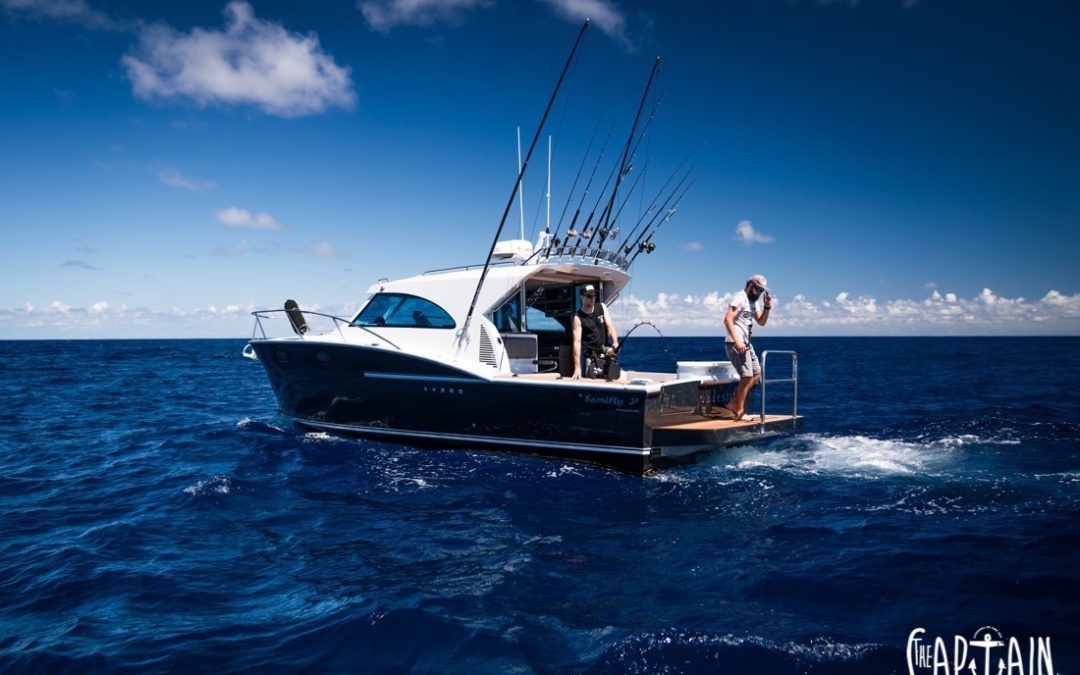

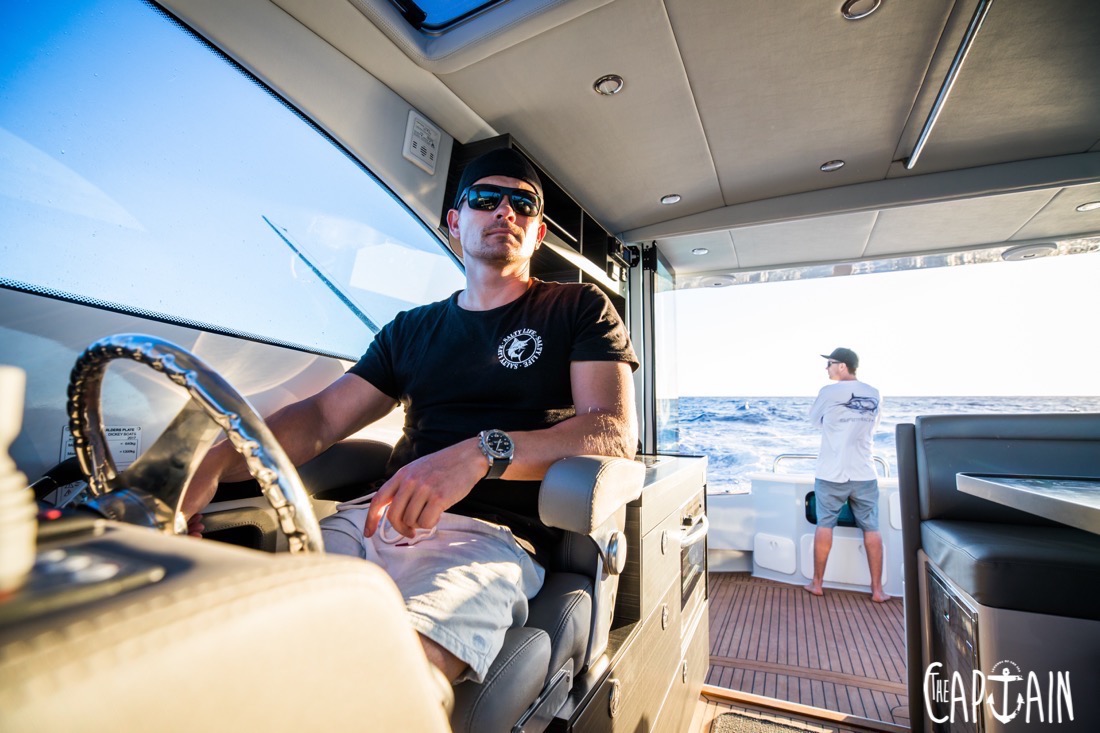

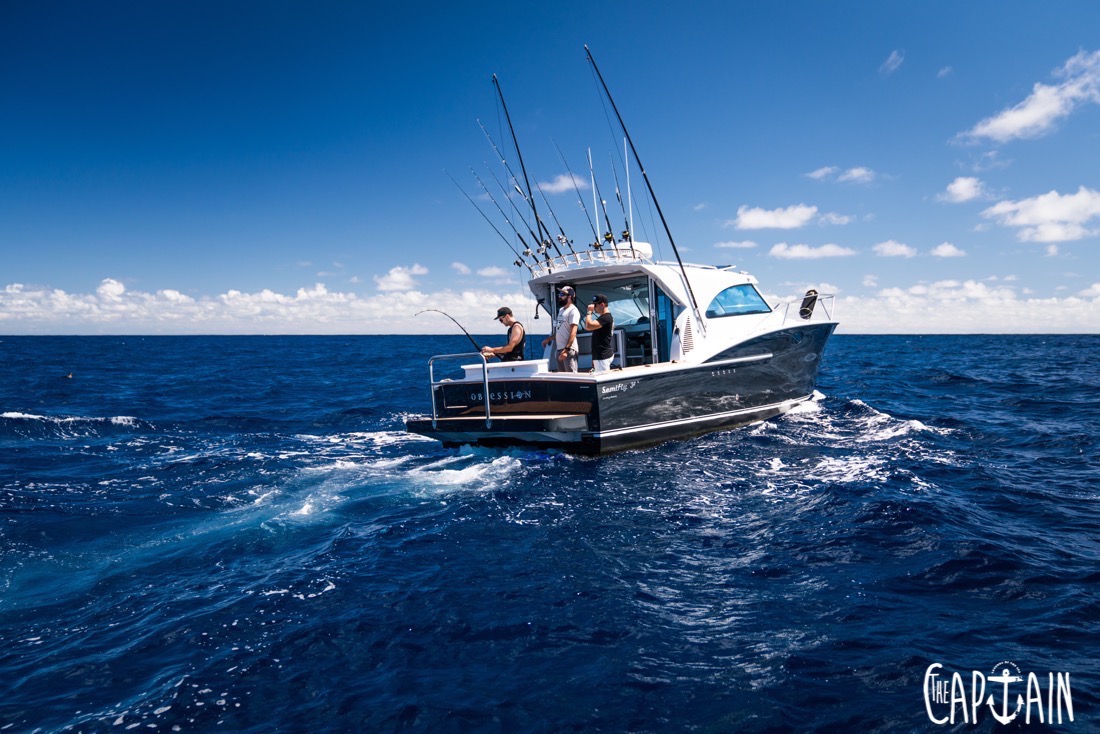
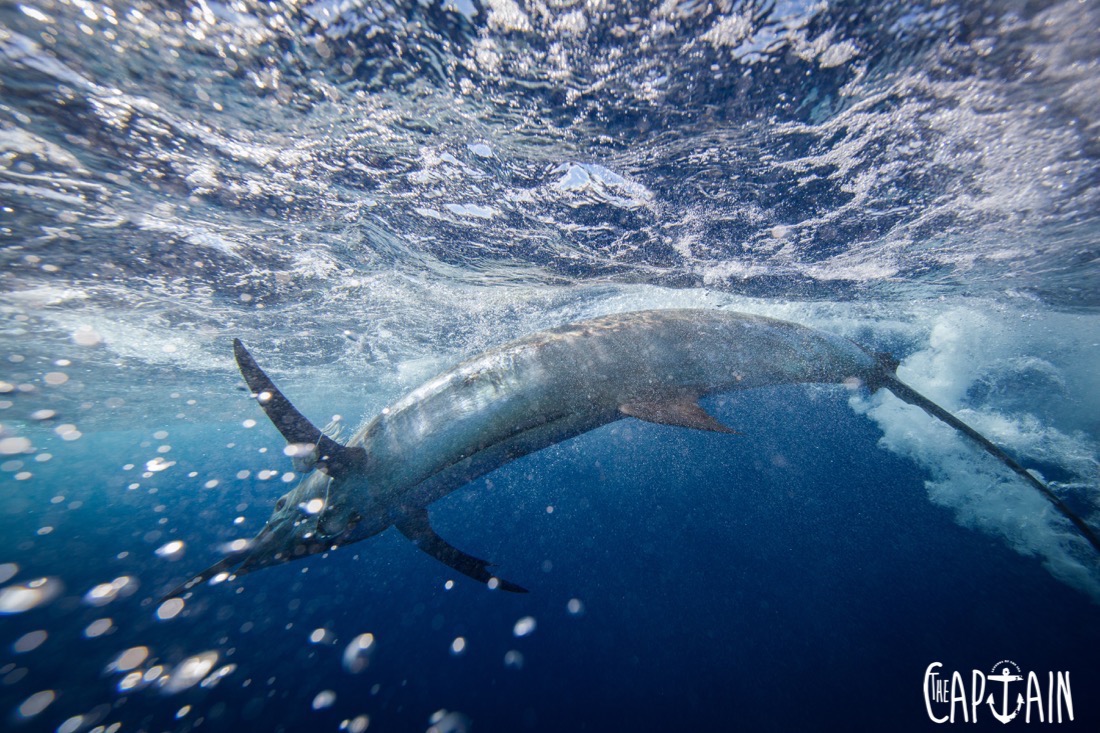
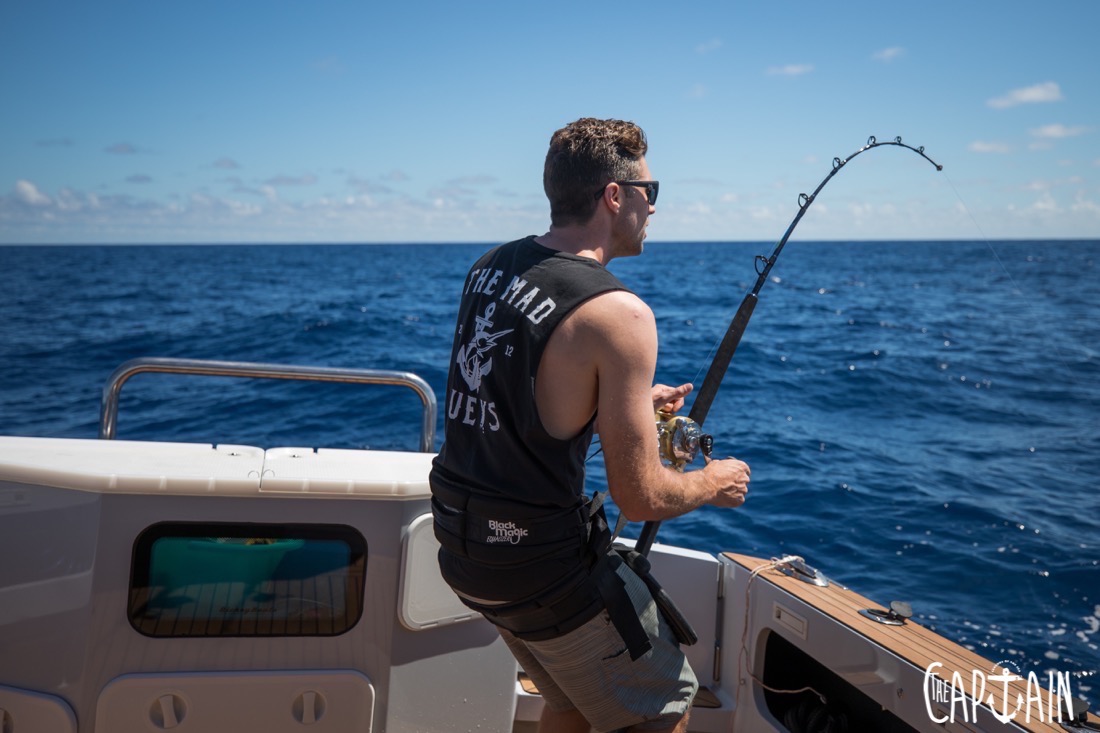
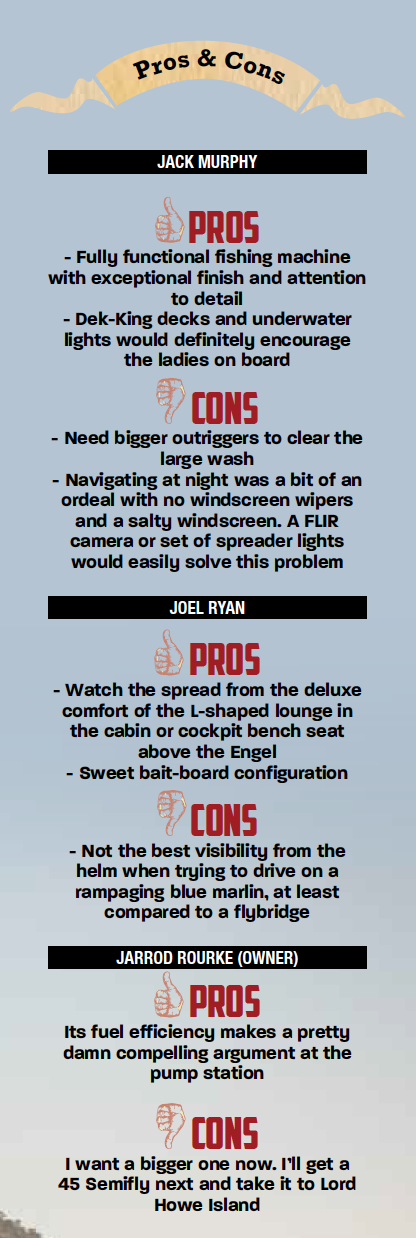


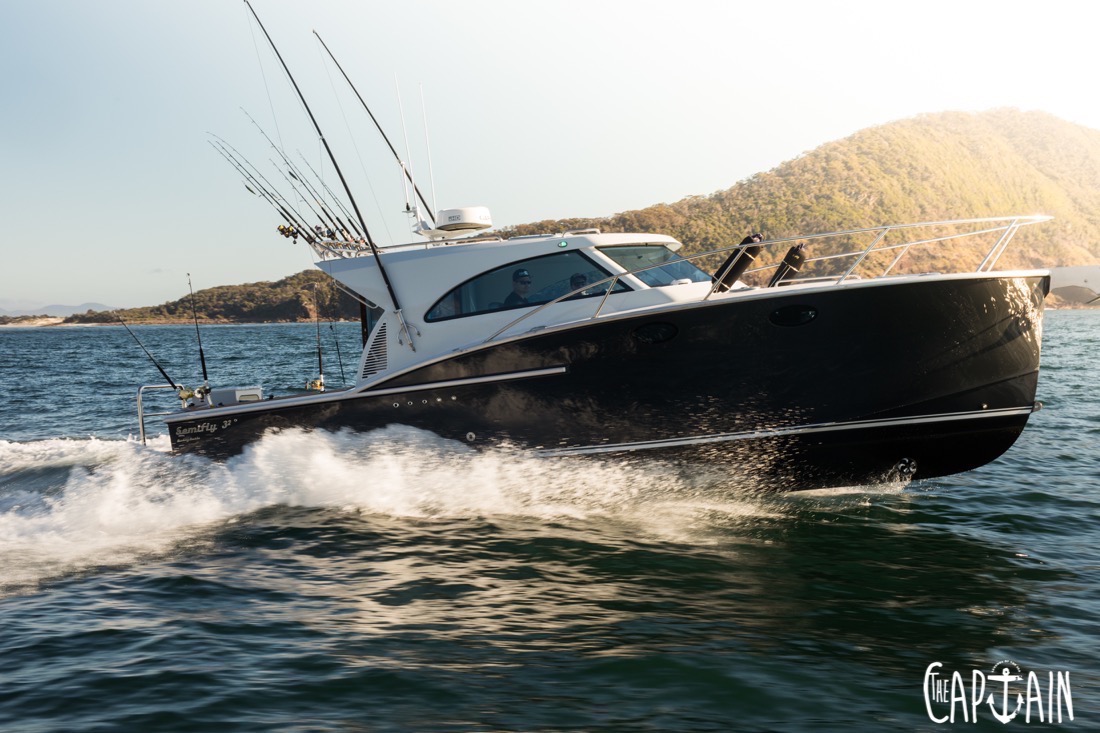

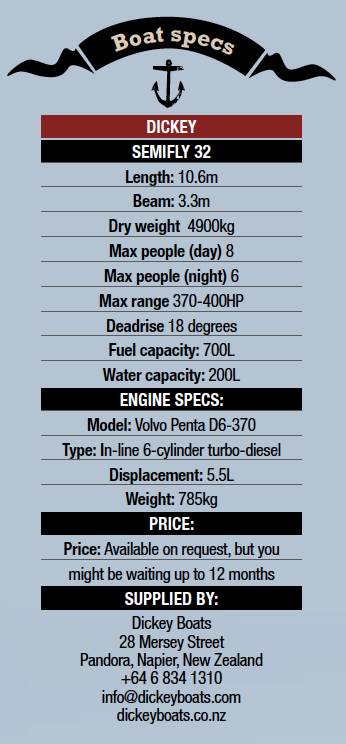
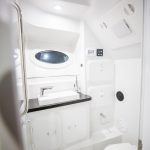
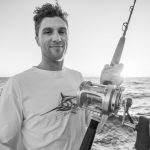
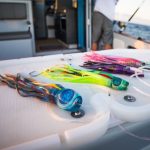
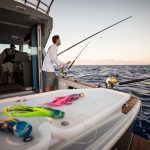
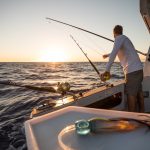
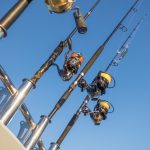
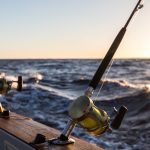
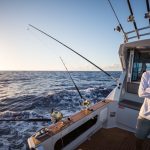
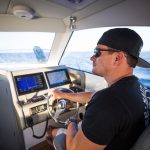
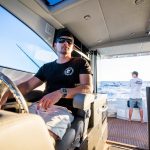


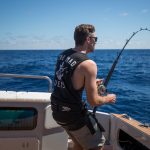
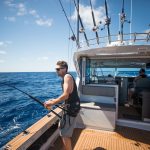
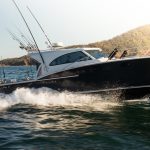
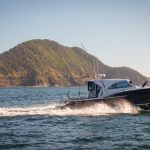
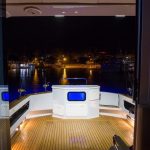
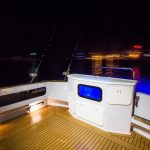
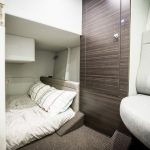
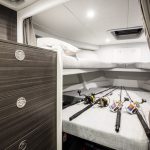
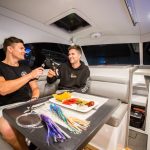
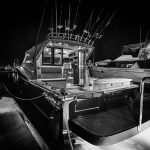
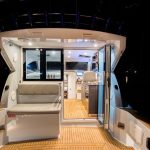

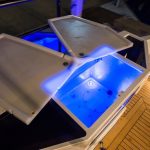

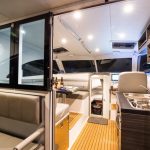
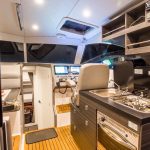
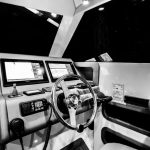
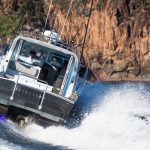
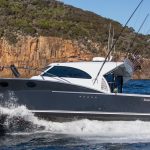
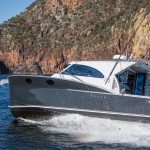
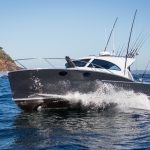
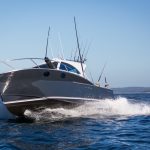
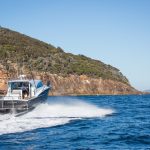
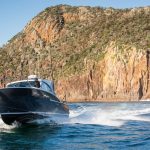
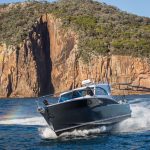
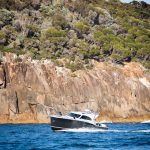
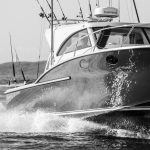
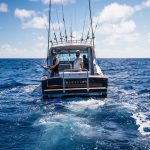
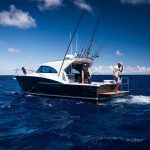
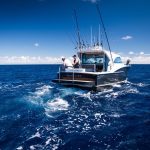
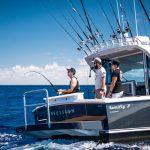
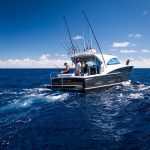
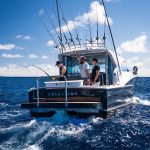


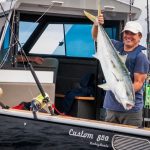
Recent Comments